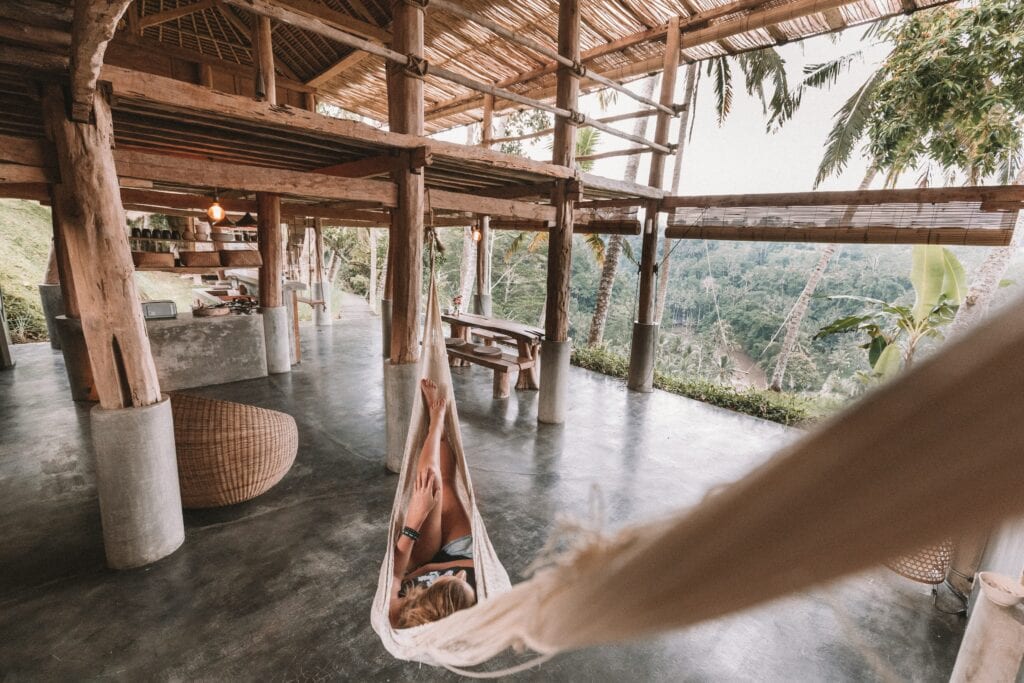Many travelers are searching for a way to relax, unwind, and reconnect with nature. Rainforest resorts offer a unique chance to enjoy the peacefulness of tropical landscapes, while experiencing eco-friendly comfort and modern luxury. These special getaways can be found deep in preserved jungles, on remote islands, and along riverbanks, creating close-up encounters with lush greenery and wildlife.
Options range from simple eco-lodges to high-end tropical retreats where guests can enjoy private pools, guided nature walks, and sustainable dining. Some rainforest resorts are designed with a strong commitment to protecting the environment, making them a great choice for anyone who wants to support conservation while traveling. Stunning places like Copal Tree Lodge in Belize and Soneva Kiri in Thailand blend comfort, adventure, and a deep respect for native forests, giving visitors an unforgettable way to connect with the world around them.
Key Takeaways
- Rainforest resorts combine luxury, nature, and sustainability.
- Options range from simple eco-lodges to high-end tropical retreats.
- Destinations offer both adventure and eco-friendly comfort.
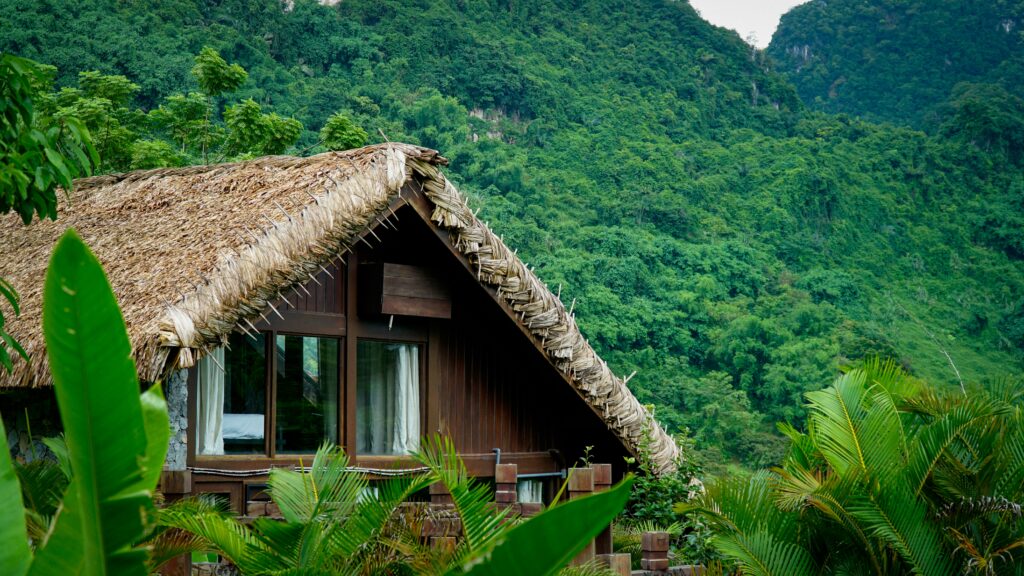
Types of Rainforest Resorts and Retreats
Rainforest resorts come in many styles, each offering its own blend of comfort, immersion in nature, and environmental responsibility. Options range from rustic eco-lodges to high-end luxury getaways, spread across diverse destinations worldwide.
Eco-Lodge vs. Jungle Lodge
Eco-lodges focus on sustainable living and low impact tourism. These resorts use solar energy, natural materials, and support conservation efforts. Guests enjoy amenities like rainwater showers, organic gardens, and guided wildlife tours. Eco-lodges aim to blend with the local environment and often include educational programs about the rainforest.
Jungle lodges provide a more traditional experience in the heart of the forest, often with basic but comfortable facilities. While many jungle lodges are also eco-friendly, some prioritize adventure activities and access to remote locations. Visitors might stay in thatched cabins or treehouses and spend days hiking, birdwatching, or exploring rivers.
Key features of both:
- Focus on immersion in nature
- Often support local communities
- Vary in comfort and amenities
Luxury Rainforest Resorts Overview
Luxury rainforest resorts combine high-end comfort with spectacular jungle settings. They provide features like private pools, spa treatments, and gourmet dining. Many, such as the Silky Oaks Lodge in Australia and the Four Seasons Resort Bali at Sayan, offer suites with floor-to-ceiling windows for panoramic views of the rainforest.
Sustainability is often emphasized at these resorts. Some, like the Mashpi Lodge in Ecuador, are recognized for their eco-luxury approach, using renewable energy and supporting conservation research. Room service, modern bathrooms, and Wi-Fi are common, creating a hotel-style experience within a wild landscape.
Guests can enjoy activities including yoga classes, guided wildlife tours, and cooking lessons. Resorts often feature eco-friendly initiatives while maintaining a high level of luxury, making them appealing for both adventure-seekers and relaxation-focused travelers. See more at this list of luxurious rainforest resorts worldwide.
Tropical Rainforest Getaways Around the World
Tropical rainforests can be found in South America, Africa, Asia, and beyond. Each location provides unique settings for rainforest resorts and retreats.
In Costa Rica, Lapa Rios Lodge sits on a 1,000-acre private nature reserve brimming with birds and wildlife. In Brazil, the Belmond Hotel das Cataratas offers exclusive access to Iguazu Falls in the heart of a UNESCO World Heritage site. Australia’s Silky Oaks Lodge gives guests riverside views next to the Daintree Forest.
Other great spots include Pacuare Lodge in Costa Rica—reachable only by raft or helicopter—and Mashpi Lodge in Ecuador, famous for its biodiversity and sky bikes. Whether seeking adventure or relaxation, rainforest retreats can be found globally, offering breathtaking scenery and a true escape into nature.
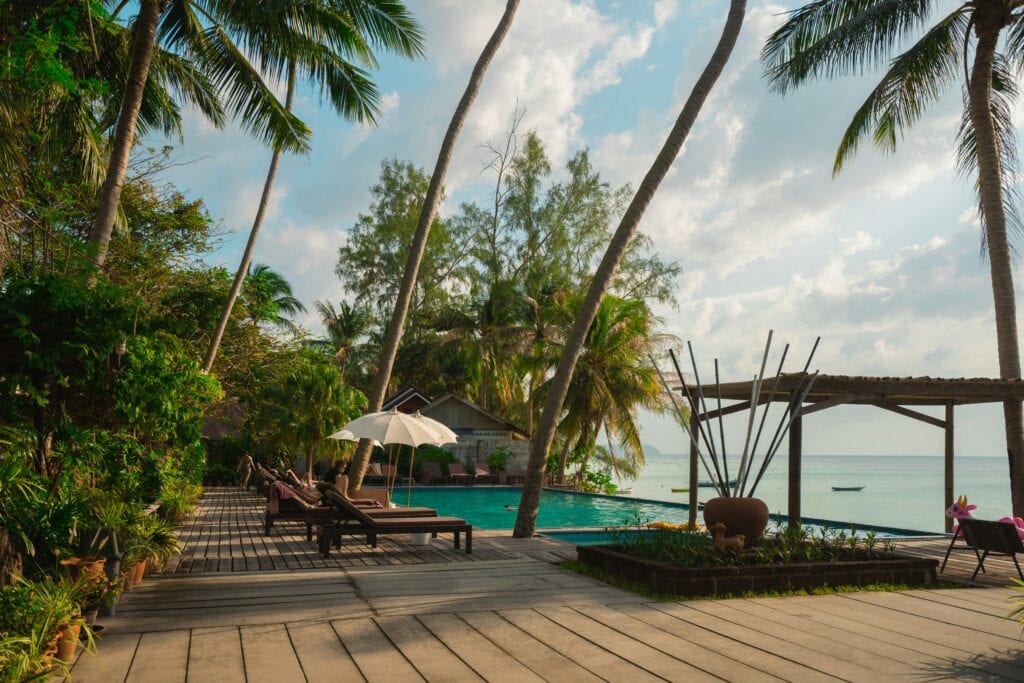
Eco-Friendly Practices and Sustainability Standards
Rainforest resorts use a range of strategies to lower their impact on the environment. These include energy solutions, waste programs, ethical tourism, and working with local people.
Renewable Energy Solutions
Rainforest resorts are turning to renewable energy, especially solar power, to reduce their carbon emissions. Many properties have solar panels on rooftops or use solar water heaters in guest rooms. This maintains comfort while cutting down on traditional energy use.
Some leading resorts operate almost entirely off the grid by combining solar energy with battery storage. Others use geothermal systems or wind turbines, depending on the site’s location. These measures allow resorts like Svart in Norway and Bardessono in California to remain energy efficient and responsible. Hotels often share their energy data with guests to show real progress.
Backup systems, such as energy-saving bulbs and motion sensors, help further lower consumption. Guests may notice filtered water stations that reduce the need for plastic bottles, which ties sustainable energy use with waste reduction at the everyday level.
Recycling and Composting Programs
Waste management is a critical priority for eco-friendly rainforest retreats. Most have strong recycling programs in place. These focus on sorting glass, plastic, metal, and paper, and making sure little waste ends up in landfills.
Composting is a key practice. Food scraps and plant waste are collected and composted to make natural fertilizer for resort gardens. For instance, resorts like Bucuti & Tara Beach Resort in Aruba have water recycling systems and compost bins throughout the property, helping to support native plants.
Some hotels eliminate single-use plastics and provide only reusable or compostable materials, such as glass bottles and bamboo straws. The addition of on-site waste separation stations makes it easy for guests and staff to follow the resort’s recycling and composting programs.
Sustainable Tourism in Rainforest Settings
Sustainable tourism is a foundation of modern rainforest resorts. To support the ecosystem, resorts limit the number of visitors and manage how guests interact with wildlife. Guided tours often focus on bird watching, flora identification, or walks with naturalists.
Strict rules help to protect sensitive areas. Places like Pikaia Lodge in the Galapagos work with national park services to keep tourism sustainable and to protect native species by restricting some zones and guiding visitor movement. Activities such as motorized sports are often banned in favor of hiking, kayaking, and other low-impact options.
Many rainforest resorts also feature research labs or conservation projects. Employees may help track animal populations, restore habitats, or share their findings with guests. This makes each visit educational and responsible for both the guest and the environment.
Community Development and Local Impact
Eco-friendly resorts prioritize working with neighboring communities. Hiring local staff and partnering with small businesses helps keep money within the region. Some properties, like Mashpi Lodge in Ecuador, make employees stakeholders, allowing them to share in profits.
Resorts often focus on buying organic produce and other supplies from area farmers and markets, supporting healthier food choices and reducing transportation emissions. Local crafts and cultural experiences are showcased to guests, preserving traditions and providing new income streams.
Many rainforest hotels also invest in schools, clinics, or clean water projects in the surrounding area. This approach links tourism to community development and local impact, encouraging lasting benefits long after guests leave. When communities thrive, both travelers and the environment benefit.
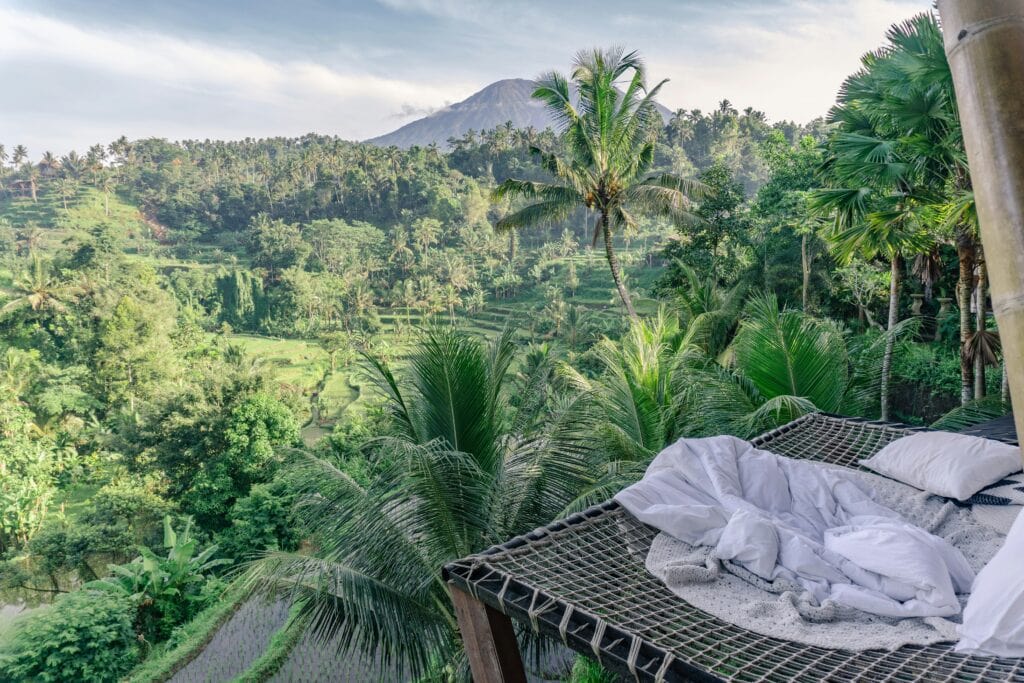
Unforgettable Destinations for Rainforest Retreats
Travelers can find unique rainforest resorts on almost every continent, each offering a different mix of adventure, wildlife, and comfort. Some lodges specialize in eco-friendly design, while others focus on luxury or immersive nature experiences.
Amazon Rainforest Luxury Escapes
The Amazon rainforest is home to some of the world’s most remote and luxurious eco-lodges. Guests at Inkaterra Reserva Amazonica in Peru stay in private cabanas along the Madre de Dios River. Here, walking along canopy bridges and joining guided wildlife tours are daily activities. Birdwatching is popular, with hundreds of species living nearby.
Mashpi Lodge, located deep in Ecuador’s rainforest, offers floor-to-ceiling windows in every room for optimal wildlife viewing. Naturalists guide guests on treks and night walks to spot monkeys, toucans, and rare frogs. These lodges emphasize both comfort and sustainability, providing solar-powered electricity and locally sourced meals. Stays often include river excursions, butterfly farms, and educational tours.
Osa Peninsula Experiences
Costa Rica’s Osa Peninsula draws visitors with untouched rainforest and rich biodiversity. Lapa Rios Lodge sits in a private reserve, where eco-friendly bungalows overlook the Pacific Ocean and jungle canopy. Each room is open-air, letting travelers hear the sounds of wildlife, including macaws and monkeys.
Copal Tree Lodge, in Belize, features organic farming workshops and cooking classes using ingredients grown on site. Guests can explore rainforest trails, enjoy birdwatching from treehouse suites, and participate in chocolate-making sessions. The focus is on sustainability and community involvement, with many activities designed to support local conservation efforts. The combination of adventure and relaxation attracts both families and couples seeking a true nature escape.
Southeast Asia’s Iconic Retreats
Southeast Asia boasts striking rainforest resorts nestled in lush tropical surroundings. The Four Seasons Resort Bali at Sayan features villas with private plunge pools and river views, surrounded by rice paddies and dense forest. Wellness classes, Balinese cooking courses, and guided nature walks are regular offerings for guests.
Keemala in Phuket and Bambu Indah in Ubud provide unique accommodations such as treetop villas and bamboo houses. Shinta Mani Wild in Cambodia integrates luxury tented suites with conservation programs and river safaris. Many of these resorts offer spa treatments using local herbs and promote outdoor activities like cycling and waterfall treks. Design often highlights eco-friendly materials and traditional crafts.
Rainforest Resorts in Central and South America
Central and South America have a wide range of eco-lodges and luxury resorts for rainforest getaways. Whitepod in Switzerland, though not tropical, uses pod-shaped tents in a forest setting for a unique back-to-nature experience.
In tropical locations, hotels like Copal Tree Lodge in Belize invite guests to explore cacao plantations and kayak down quiet rivers. Costa Rican lodges often provide easy access to wildlife sanctuaries and zip-lining adventures. Many resorts along the Amazon and Andean foothills include guided tours of local villages, educational wildlife sessions, and outdoor pools surrounded by jungle. Resort stays in this region often blend cultural experiences with modern comforts. For more detailed options, see this guide to rainforest resorts for an unforgettable nature escape.
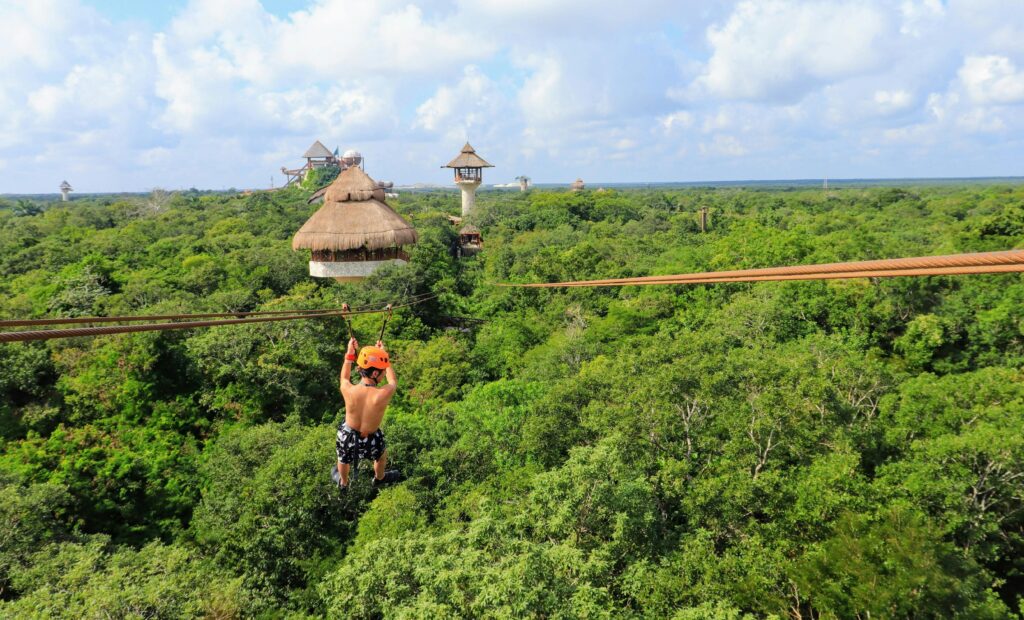
Planning Your Nature Escape Vacation
A successful rainforest vacation depends on matching the right retreat to personal interests, understanding the activities available, and taking advantage of wellness and food experiences unique to rainforest resorts. Rather than rushing, travelers benefit from making thoughtful choices and focusing on eco-friendly practices.
Choosing the Right Rainforest Resort
Selecting the ideal rainforest resort is about more than location. Travelers should consider whether they want a luxury experience or a more rustic, eco-focused stay. Some lodges, like the acclaimed Silky Oaks Lodge in Australia, offer modern treehouses and a blend of comfort and sustainability.
Below is a quick checklist to help compare options:
| Criteria | Description |
|---|---|
| Accommodation Style | Treehouse, bungalow, villa, or traditional room |
| Eco-Friendliness | Renewable energy, minimal plastic use, conservation |
| Accessibility | Proximity to main sites, transportation options |
| Community Involvement | Support for local people and cultures |
Ensuring the retreat values conservation and sources organic produce for meals can make a big difference. Many resorts focus on supporting indigenous communities and protecting wildlife while providing modern amenities.
Wildlife and Adventure Activities
Rainforest getaways offer prime opportunities for wildlife viewing and outdoor adventure. Guided jungle treks allow visitors to see rare birds, monkeys, and native plants. Certain sites, such as Bwindi Lodge in Uganda, are known for gorilla trekking.
Popular adventure activities include:
- Ziplining through the canopy
- Canoeing or rafting on jungle rivers
- Night hikes to observe nocturnal animals
- Visiting nearby waterfalls or caves
The best rainforest retreats hire experienced guides to enhance the experience and support safe exploration. Travelers should look for resorts that prioritize minimizing their impact on the environment during all activities.
Wellness and Culinary Experiences
Wellness is a growing focus at many rainforest resorts. Spas often use local ingredients and traditional techniques, such as herbal treatments or massages based on indigenous knowledge. Resorts like Copal Tree Lodge in Belize let guests try chocolate-making classes with cacao grown on the property.
Plant-based cuisines, organic produce, and farm-to-table dining experiences are common. Many retreats involve guests in harvesting fruits and vegetables or offer cooking classes to showcase regional flavors.
A focus on wellness may also include guided yoga sessions, meditation by rivers or waterfalls, and access to natural thermal springs or pools. This holistic approach supports both relaxation and a deeper connection to the surrounding rainforest.

Frequently Asked Questions
Rainforest resorts appeal to travelers interested in natural beauty, wildlife, and environmentally responsible stays. These destinations can be luxurious, all-inclusive, or focused on eco-friendly comfort and local culture.
What are the top-rated all-inclusive rainforest resorts?
Top all-inclusive rainforest resorts include Four Seasons Resort at Sayan in Bali, Pacuare Lodge in Costa Rica, and Belmond Hotel das Cataratas in Brazil. These locations often offer guided tours, meals, and activities in their packages. For more options, see this list of spectacular rainforest resorts.
Which luxury rainforest resorts offer the best eco-friendly experiences?
Many luxury rainforest resorts blend comfort with sustainability. Gaia Amazon EcoLodge in Ecuador and Copal Tree Lodge in Belize stand out for their efforts in conservation, local sourcing, and community engagement. Properties such as The Datai Langkawi in Malaysia also provide nature-focused programs and sustainable amenities.
How do I choose the right jungle resort for a family vacation?
Families should look for resorts with kid-friendly activities, guided nature walks, and flexible meal options. It’s also important to check safety features and the availability of larger rooms or private villas. Some resorts organize cultural tours and hands-on experiences suitable for all ages.
What amenities can I expect at a five-star tropical rainforest getaway?
Guests can expect fine dining, spa treatments, private pools, and modern rooms or suites. Onsite guides may offer wildlife tours, yoga, and local cooking classes. Many five-star properties also include wellness centers, fitness facilities, and transportation to nearby attractions.
Are there any all-inclusive rainforest retreats located in the USA?
The USA offers some rainforest lodges, especially in Hawaii, such as eco resorts in Kauai, that feature sustainable practices and luxury services. While traditional all-inclusive rainforest resorts are less common in the US, select properties do provide bundled packages including meals, activities, and nature tours.
What should I look for when booking a nature escape vacation in Costa Rica?
Travelers should check a resort’s proximity to national parks, access to guided tours, and eco-certifications. It helps to review if the property supports local communities and wildlife conservation. Amenities such as pools, jungle excursions, and meal plans can help guests plan a more enjoyable stay in Costa Rica’s lush rainforests.
You Might Also Like:
If you enjoyed this post on Rainforest Resorts: The Ultimate Escape, you might also like: Eco-Friendly Travel: Where to Go Now, Best Countries to Visit for Under $1000, Escape to Paradise: Best Greek Islands to Visit Now
